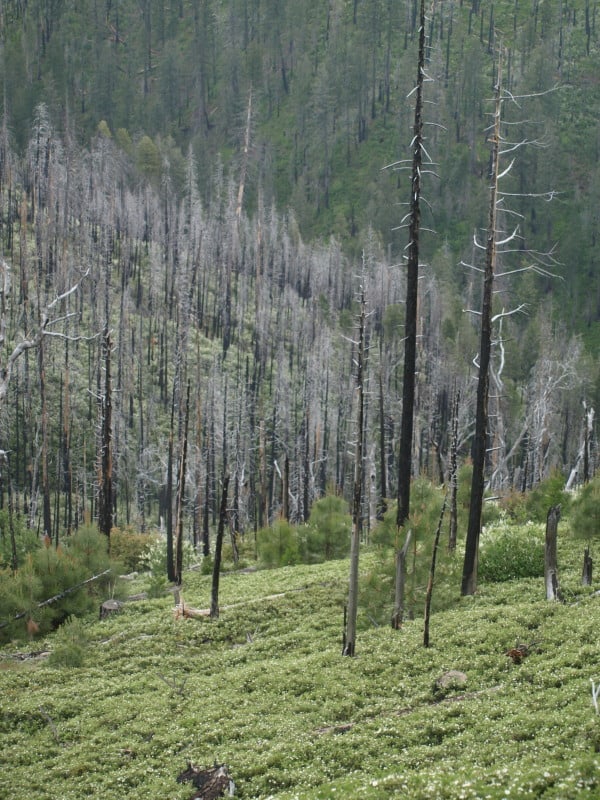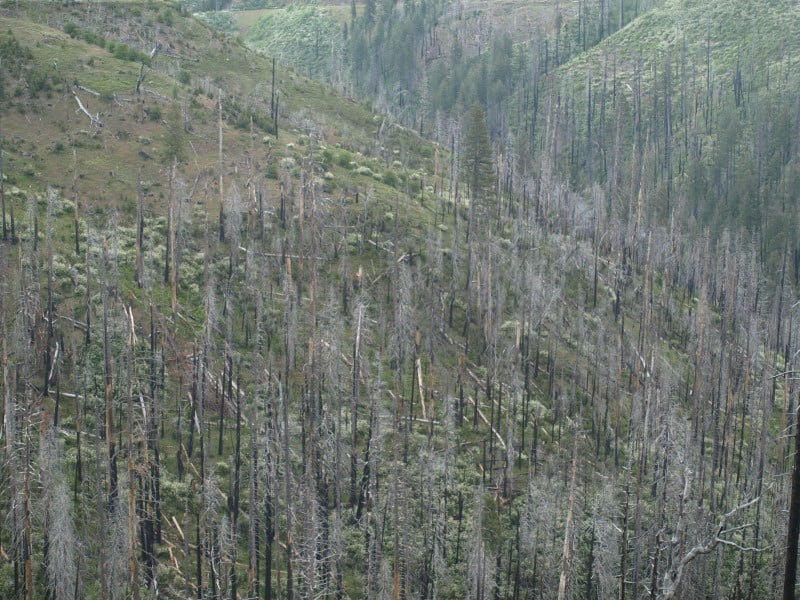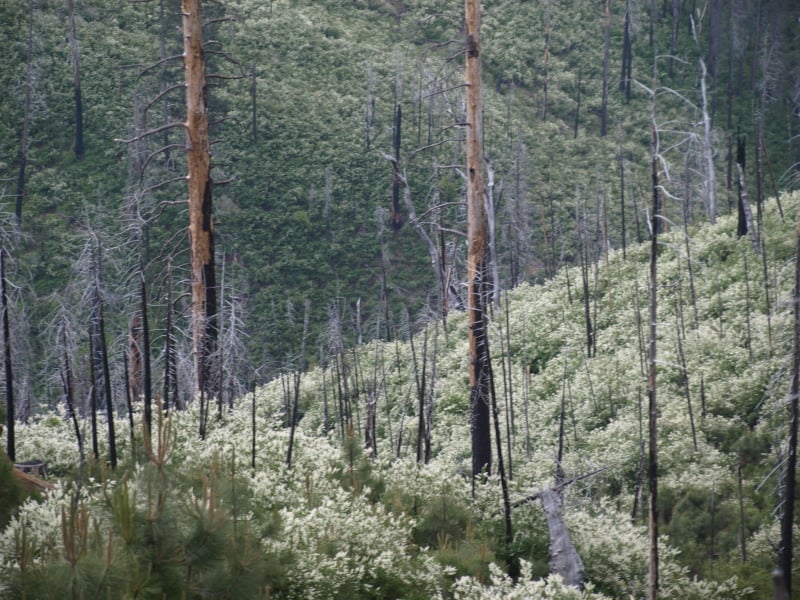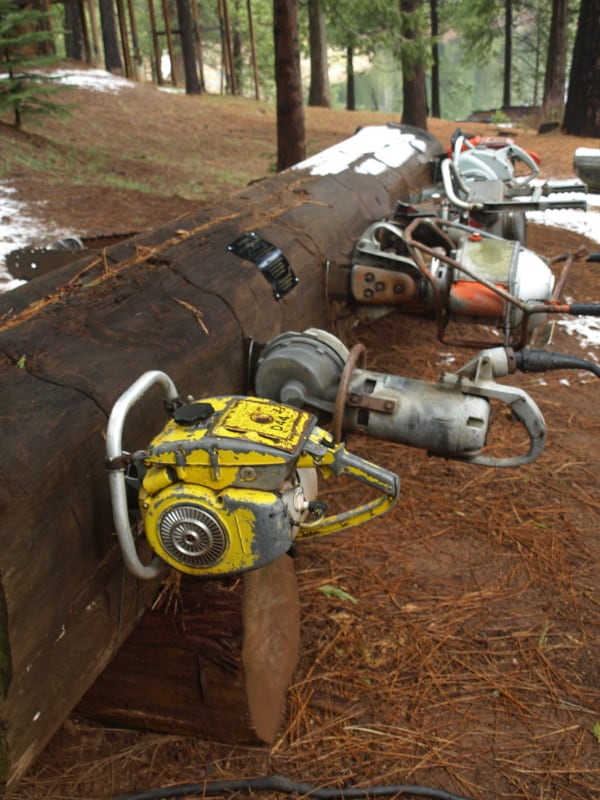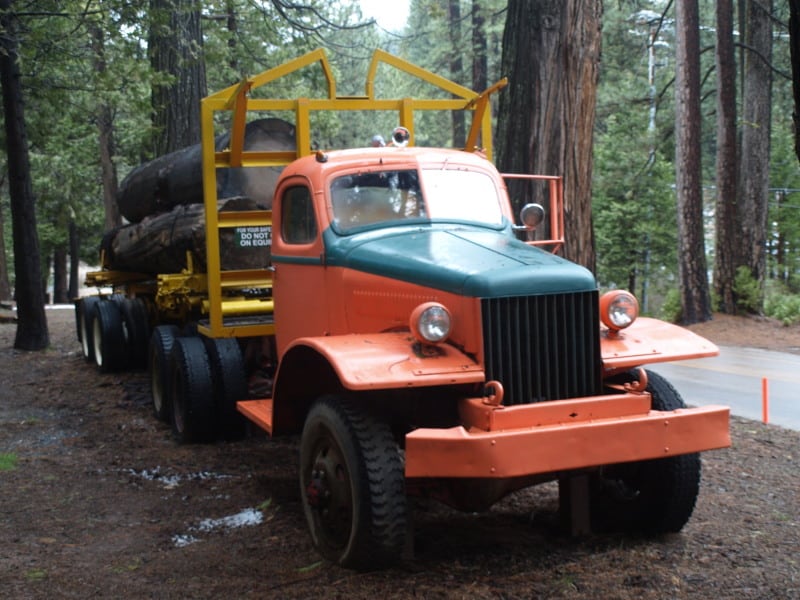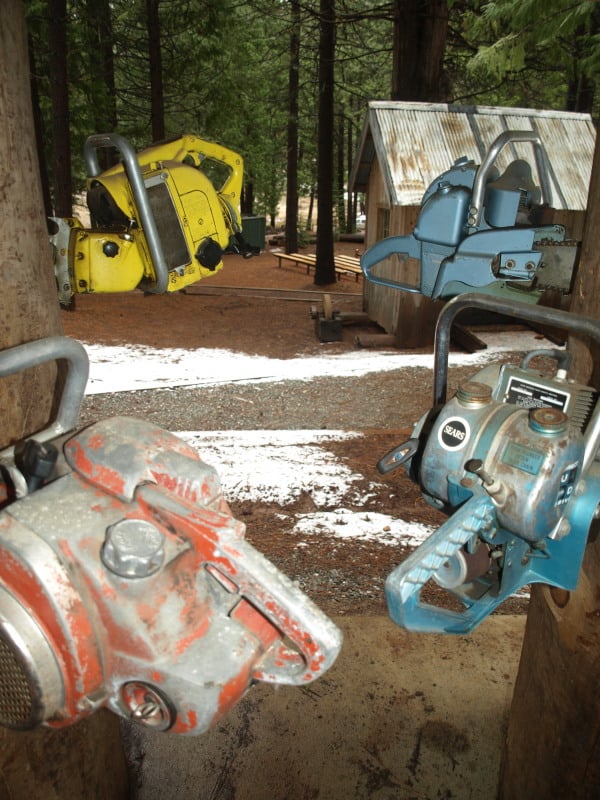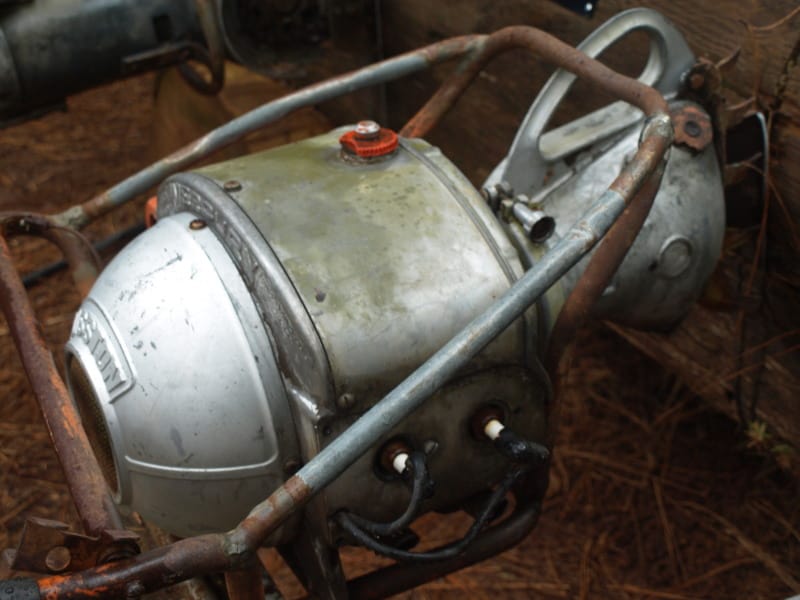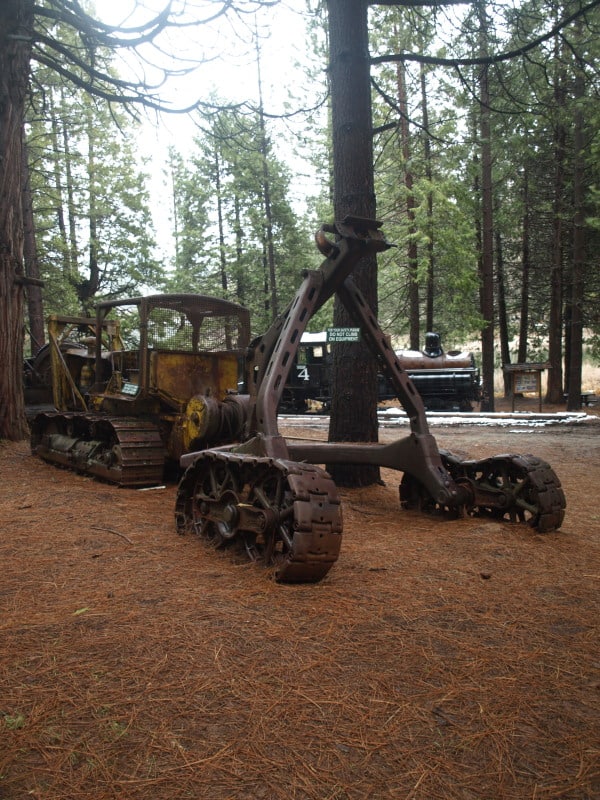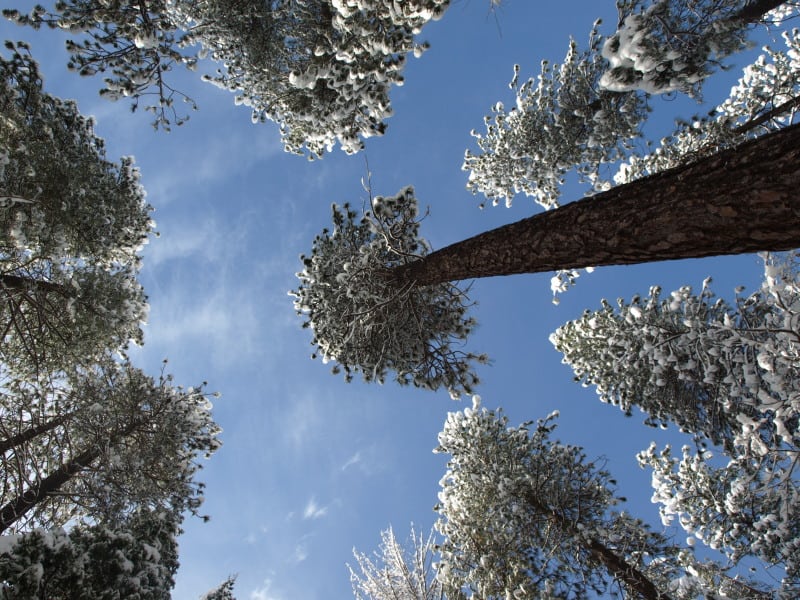Here is Region Five’s “Ecological Restoration Implementation Plan”. It is definitely worth a browse, especially if you are a local within or near any of these National Forests. Each Forest spells out what it is doing and what it is planning.
http://www.fs.usda.gov/Internet/FSE_DOCUMENTS/stelprdb5411383.pdf
(The picture is an old one, from fall of 2000. I had been here, salvaging bug-killed trees, in 1991. There was obviously additional mortality after that.)
From the Eldorado NF entry:
Goals include:
Maintain healthy and well-distributed populations of native species through sustaining habitats associated with those species
Use ecological strategies for post-fire restoration
Apply best science to make restoration decisions
Involve the public through collaborative partnerships that build trust among diverse interest groups
Create additional funding sources through partnerships
Incorporate the “Triple Bottom Line” into our restoration strategy: emphasizing social, economic and ecological objectives
Implement an “All lands approach” for restoring landscapes
Establish a sustainable level of recreational activities and restore landscapes affected by unmanaged recreation
Implement an effective conservation education and interpretation program that promotes understanding the value of healthy watersheds and ecosystem services they deliver and support for restoration actions.
Improve the function of streams and meadows
Restore resilience of the Forests to wildfire, insects and disease
Integrate program funding and priorities to create effective and efficient implementation of restoration activities
Reduce the spread of non-native invasive species


